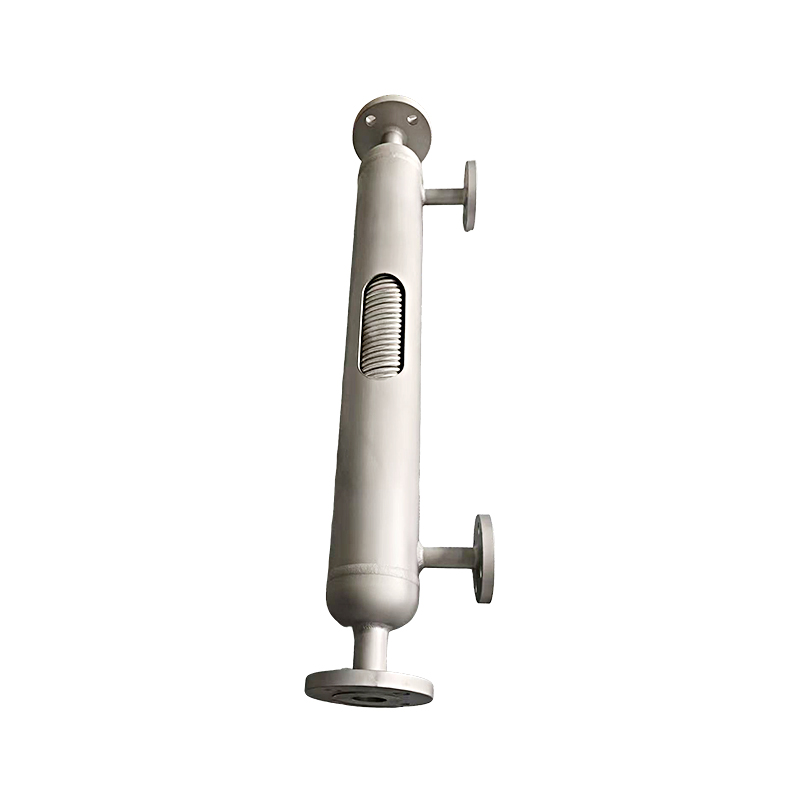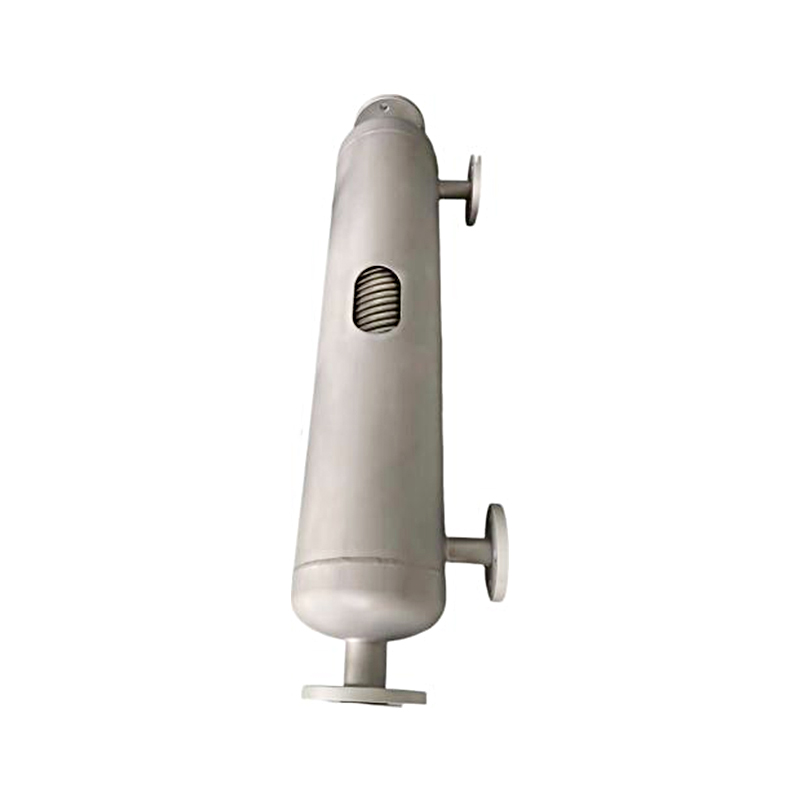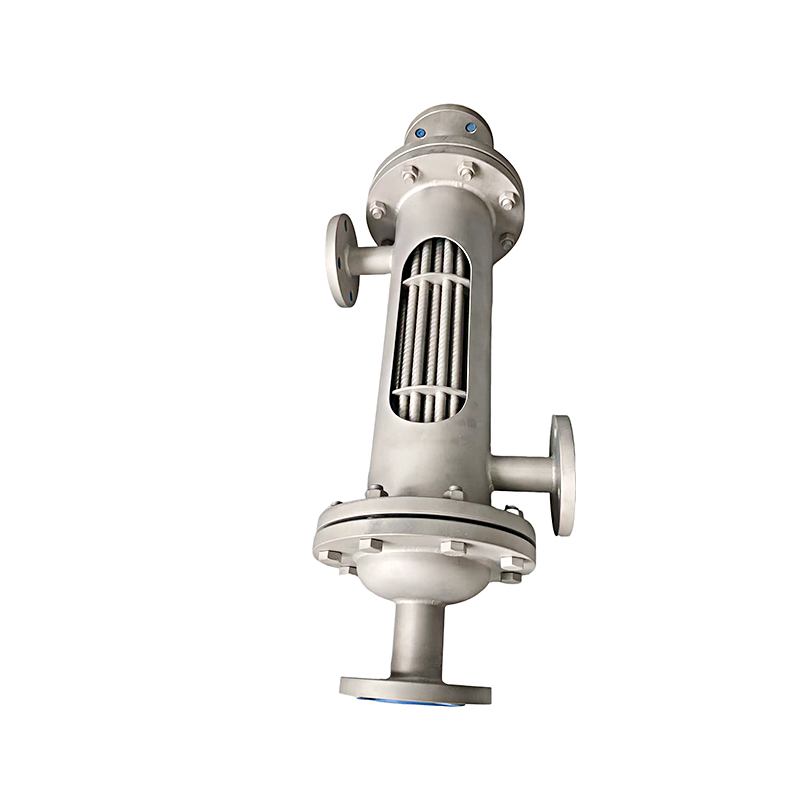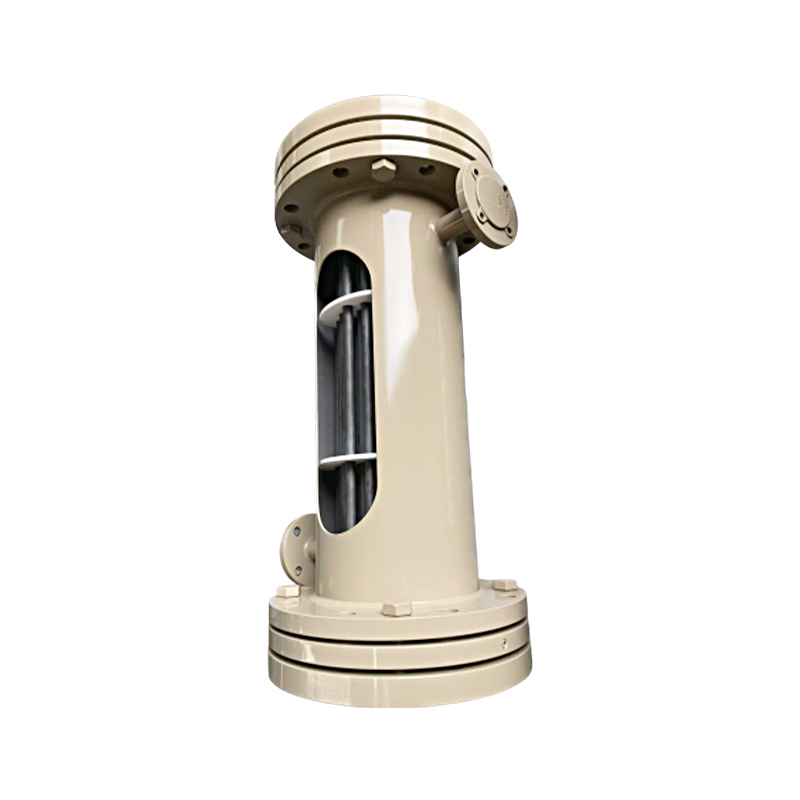How can the performance of heat exchanger cyclone collectors be guaranteed to remain stable under variable operating conditions?
Release Time : 2025-09-24
In modern industrial production, integrated heat exchanger and cyclone collector systems are widely used in complex applications such as high-temperature flue gas treatment, waste heat recovery, and biomass energy utilization. However, during actual operation, airflow temperature, pressure, flow rate, and dust concentration often fluctuate frequently, creating a "variable operating condition." This unstable operating environment can easily lead to reduced efficiency, blockage, vibration, and even failure of traditional equipment. However, heat exchanger cyclone collectors, utilizing advanced design concepts, leverage their unique structural and material advantages to maintain efficient and stable operation under variable operating conditions, becoming a core component in industrial energy conservation and environmental protection systems.
1. Flexible Tube Bundle Structures Respond to Thermal Stress and Vibration Shock
The most common problem with variable operating conditions is the thermal expansion and contraction caused by drastic temperature fluctuations, which generates significant thermal stress within the equipment. This often leads to weld cracking and tube sheet deformation in traditional heat exchangers. This product utilizes a unique spirally wound elastic tube bundle structure, which offers excellent flexibility and elasticity. This structure can freely absorb differential expansion caused by temperature fluctuations, effectively eliminating thermal stresses. Furthermore, this structure suppresses fluid-induced pipe vibration, preventing fatigue damage caused by vibration, and ensuring structural integrity and heat transfer efficiency despite frequent starts and stops or load fluctuations.
2. Asymmetric Flow Channel Design Adapts to Complex Media Variations
In heat transfer processes involving gas-liquid two-phase flow or gas-solid mixed flow, the media ratio often fluctuates with operating conditions. Traditional symmetrical flow channels can easily lead to uneven flow rates, localized overheating, or inadequate condensation. This device utilizes an asymmetric flow channel design, optimizing the flow channel cross-section and distribution based on the physical properties of different media. This ensures uniform distribution of high-temperature gas, steam, or dust-laden airflow under variable flow conditions, maintaining a stable heat transfer coefficient. This design performs particularly well in gas-liquid heat exchange conditions, effectively coping with steam load fluctuations, preventing dry-burning or liquid film rupture, and ensuring stable heat transfer performance.
3. Patented Tangential Feed Structure Improves Separation Efficiency and Stability
The separation efficiency of a cyclone collector is highly dependent on the stability and tangential velocity of the inlet airflow. Under conditions of large flow rate fluctuations, traditional feed methods can easily lead to turbulent vortices and reduced separation efficiency. This product utilizes a unique, patented tangential feed structure. By optimizing the inlet angle and flow channel curvature, it ensures that the airflow forms a stable rotating vortex under varying flow conditions, maintaining efficient centrifugal separation. Even under low-load operation, it effectively captures fine dust, preventing particulate matter from entering downstream systems and causing wear or blockage.
4. Baffle-Free Design Reduces Pressure Drop and Fouling Risk
Traditional heat exchangers often incorporate baffles to enhance flow turbulence, but this also introduces high resistance and increased fouling. Under variable operating conditions, varying flow rates can easily lead to vortex dead zones in the baffle area, exacerbating fouling and corrosion. This device is baffle-free, eliminating dead zones and stagnant areas, and its flow channel is smooth and unobstructed. This not only achieves extremely low pressure drop without increasing the load on the front-end fan or pump, but also significantly reduces the likelihood of dust and impurity deposition. With its built-in cleaning function, the system can be cleaned online without shutting down, removing deposits promptly and ensuring unimpaired heat exchange and separation performance during long-term operation.
5. Efficient gas-liquid separation prevents damage to downstream equipment
The cooling process of high-temperature gas often generates condensate. If condensate is entrained by the high-speed airflow and enters downstream equipment, it can cause corrosion, water hammer, or blockage. This device boasts excellent gas-liquid separation capabilities. Through cyclonic centrifugal action and an internal separation structure, it efficiently removes droplets from the airflow, significantly reducing condensate entrainment, protecting downstream pipelines and equipment, and improving overall system stability.
Under variable operating conditions, the heat exchanger cyclone collector utilizes a flexible tube bundle design to resist thermal stress, an asymmetric flow channel to adapt to media changes, a tangential feed structure to ensure separation efficiency, and a dead-angle flow channel to reduce pressure drop and fouling risks. Combined with efficient gas-liquid separation, it provides a comprehensive stability assurance system. Its compact size, high-temperature and high-pressure resistance, and simplified maintenance further enhance the system's adaptability to complex industrial environments. This integrated equipment, which combines high efficiency, stability and durability, provides strong technical support for energy conservation and consumption reduction as well as continuous and stable operation of industrial processes.
1. Flexible Tube Bundle Structures Respond to Thermal Stress and Vibration Shock
The most common problem with variable operating conditions is the thermal expansion and contraction caused by drastic temperature fluctuations, which generates significant thermal stress within the equipment. This often leads to weld cracking and tube sheet deformation in traditional heat exchangers. This product utilizes a unique spirally wound elastic tube bundle structure, which offers excellent flexibility and elasticity. This structure can freely absorb differential expansion caused by temperature fluctuations, effectively eliminating thermal stresses. Furthermore, this structure suppresses fluid-induced pipe vibration, preventing fatigue damage caused by vibration, and ensuring structural integrity and heat transfer efficiency despite frequent starts and stops or load fluctuations.
2. Asymmetric Flow Channel Design Adapts to Complex Media Variations
In heat transfer processes involving gas-liquid two-phase flow or gas-solid mixed flow, the media ratio often fluctuates with operating conditions. Traditional symmetrical flow channels can easily lead to uneven flow rates, localized overheating, or inadequate condensation. This device utilizes an asymmetric flow channel design, optimizing the flow channel cross-section and distribution based on the physical properties of different media. This ensures uniform distribution of high-temperature gas, steam, or dust-laden airflow under variable flow conditions, maintaining a stable heat transfer coefficient. This design performs particularly well in gas-liquid heat exchange conditions, effectively coping with steam load fluctuations, preventing dry-burning or liquid film rupture, and ensuring stable heat transfer performance.
3. Patented Tangential Feed Structure Improves Separation Efficiency and Stability
The separation efficiency of a cyclone collector is highly dependent on the stability and tangential velocity of the inlet airflow. Under conditions of large flow rate fluctuations, traditional feed methods can easily lead to turbulent vortices and reduced separation efficiency. This product utilizes a unique, patented tangential feed structure. By optimizing the inlet angle and flow channel curvature, it ensures that the airflow forms a stable rotating vortex under varying flow conditions, maintaining efficient centrifugal separation. Even under low-load operation, it effectively captures fine dust, preventing particulate matter from entering downstream systems and causing wear or blockage.
4. Baffle-Free Design Reduces Pressure Drop and Fouling Risk
Traditional heat exchangers often incorporate baffles to enhance flow turbulence, but this also introduces high resistance and increased fouling. Under variable operating conditions, varying flow rates can easily lead to vortex dead zones in the baffle area, exacerbating fouling and corrosion. This device is baffle-free, eliminating dead zones and stagnant areas, and its flow channel is smooth and unobstructed. This not only achieves extremely low pressure drop without increasing the load on the front-end fan or pump, but also significantly reduces the likelihood of dust and impurity deposition. With its built-in cleaning function, the system can be cleaned online without shutting down, removing deposits promptly and ensuring unimpaired heat exchange and separation performance during long-term operation.
5. Efficient gas-liquid separation prevents damage to downstream equipment
The cooling process of high-temperature gas often generates condensate. If condensate is entrained by the high-speed airflow and enters downstream equipment, it can cause corrosion, water hammer, or blockage. This device boasts excellent gas-liquid separation capabilities. Through cyclonic centrifugal action and an internal separation structure, it efficiently removes droplets from the airflow, significantly reducing condensate entrainment, protecting downstream pipelines and equipment, and improving overall system stability.
Under variable operating conditions, the heat exchanger cyclone collector utilizes a flexible tube bundle design to resist thermal stress, an asymmetric flow channel to adapt to media changes, a tangential feed structure to ensure separation efficiency, and a dead-angle flow channel to reduce pressure drop and fouling risks. Combined with efficient gas-liquid separation, it provides a comprehensive stability assurance system. Its compact size, high-temperature and high-pressure resistance, and simplified maintenance further enhance the system's adaptability to complex industrial environments. This integrated equipment, which combines high efficiency, stability and durability, provides strong technical support for energy conservation and consumption reduction as well as continuous and stable operation of industrial processes.








